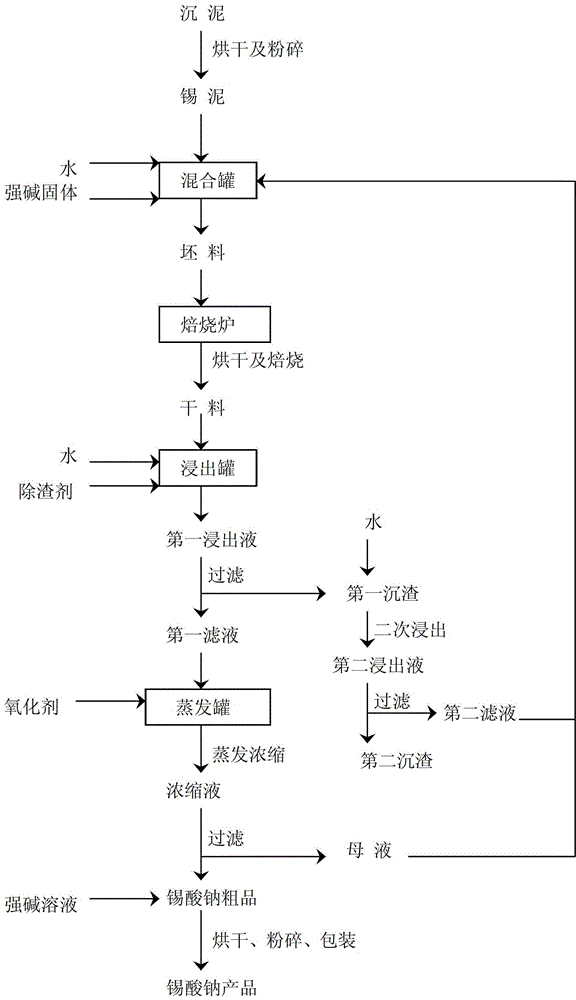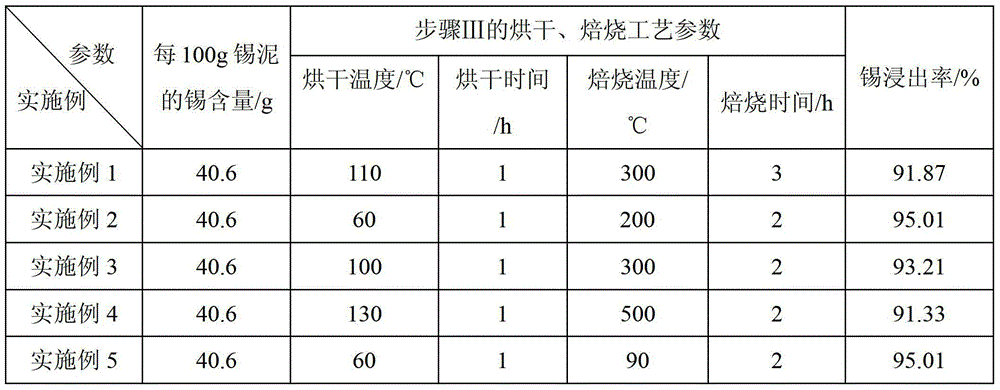Method for preparing sodium stannate by utilizing tin-removed wastewater
A technology for tin stripping wastewater and sodium stannate, applied in chemical instruments and methods, tin compounds, water/sewage treatment and other directions, can solve the problems of low recovery rate of valuable metals, unfavorable environmental protection, long reaction time, etc. Good development prospects, significant economic benefits, and the effect of reducing roasting temperature
- Summary
- Abstract
- Description
- Claims
- Application Information
AI Technical Summary
Problems solved by technology
Method used
Image
Examples
Embodiment 1
[0037] As shown in the figure, the method for preparing sodium stannate by utilizing tin stripping wastewater comprises the following steps:
[0038] 1. The tin stripping wastewater is subjected to precipitation treatment, and the filtered sludge is heated and dried at about 120°C. This step will affect the subsequent reaction quality, so it is necessary to ensure that the sludge is completely dry. The dried sludge is the tin sludge used as the raw material for the reaction, which is pulverized into powder by a pulverizer for later use. The chemical element analysis results of the sludge or tin sludge are shown in Table 1.
[0039] Table 1 Analysis results of chemical elements of sludge / tin sludge
[0040] Detection item
sn
Pb
Cu
Fe
As
Sb
Ingredient content / %
40.6
0.00013
4.11
6.93
0.00024
0.000201
0.48
49.0
[0041] (*Except for "moisture" which is the test resul...
PUM
 Login to View More
Login to View More Abstract
Description
Claims
Application Information
 Login to View More
Login to View More - R&D
- Intellectual Property
- Life Sciences
- Materials
- Tech Scout
- Unparalleled Data Quality
- Higher Quality Content
- 60% Fewer Hallucinations
Browse by: Latest US Patents, China's latest patents, Technical Efficacy Thesaurus, Application Domain, Technology Topic, Popular Technical Reports.
© 2025 PatSnap. All rights reserved.Legal|Privacy policy|Modern Slavery Act Transparency Statement|Sitemap|About US| Contact US: help@patsnap.com



